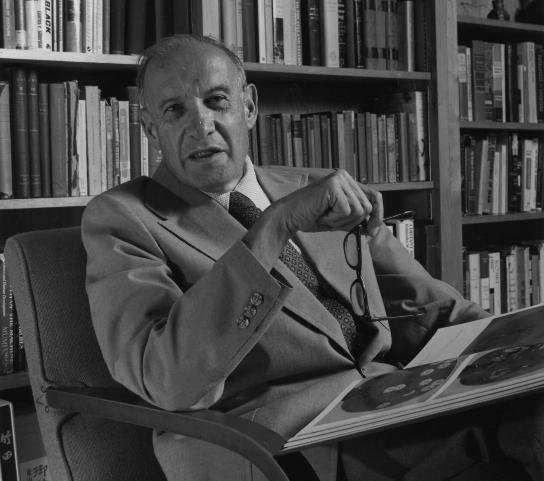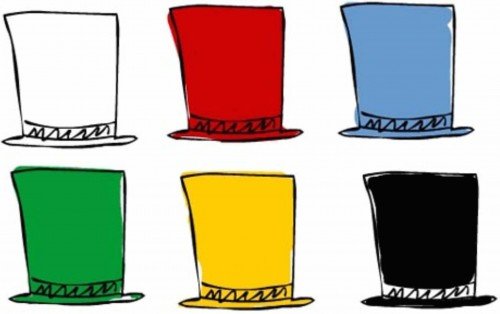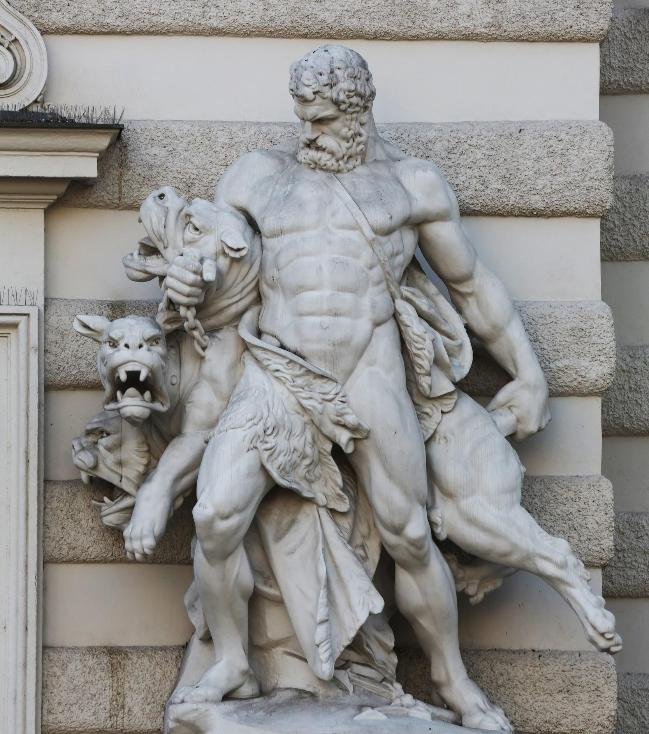
THE BIG IDEA: Five habits that offer every leader continuous room for improvement in actualizing their potential and growing their organization.

THE BIG IDEA: Humor is a powerful, largely underutilized resource that can uplift your organization. Today we’ll look at how Southwest Airlines uses humor to stay on top.
__________________
Bleary-eyed passengers who have come to equate air travel with their worst living nightmare have to fight hard not to smile when disembarking from a Southwest flight.
Immediately after takeoff, the pilot’s voice is heard through the overhead speaker: “Bear with me folks, this is my first time.”
Chuckles are heard throughout the cabin.
In reviewing the safety procedures, a flight attendant instructs, “In the event of a sudden loss of cabin pressure, oxygen masks will descend from the ceiling. Stop screaming, grab the mask, and pull it over your face. If you have a small child traveling with you, secure your mask before assisting with theirs. If you are traveling with two small children, decide now which one you love more.”
The laughter continues.
When the plane lands, a flight attendant warns, “Please use caution when opening the overhead compartments, as shift happens.”
A Happy Workplace Translates to Greater Profitability
It’s well known that a healthy workplace boosts morale, lowers turnover, decreases absenteeism, and increases productivity.
When workplaces are plagued by negative energy, backstabbing antics, and gossipmongers, people turn into the lost school children of Lord of the Flies, forced to fend for themselves in a cruel, competitive, and unforgiving world.
Southwest Airlines understands that humor has the power to ease stressful situations, build rapport and cohesiveness, and soften the most hardened lines of communication.
The organization knows that humor and a happy work environment translates to the bottom line. After all, the airline has remained consistently profitable for the last 42 consecutive years.
Creating a Culture of Fun Starts at the Top
Who did Southwest inherit the funny genes from? Who else, but the zany, jolly good fellow by the name of Herb Kelleher. As founder and former chairman of Southwest, Kelleher’s off-the-wall antics successfully established the mood for the company’s quirky culture.
In one famously outrageous incident, Kelleher and Kurt Herwald, then chairman of Stevens Aviation went head-to-head in an arm-wrestling competition over the rights to a slogan. Stevens Aviation was using their “Plane Smart” catchphrase for a year before Southwest inadvertently infringed on their rights with its “Just Plane Smart” campaign.
The dual, scheduled for high noon, would proclaim one winner. Kelleher lost the match, but in a spirit of good will, Herwald granted Southwest permission for continued use of the tagline.
Kelleher knows that humor can disarm his competitors, dissolve hurt feelings, and mollify potentially litigious situations. He also knows that humor can ease customer frustrations and create positive associations that last.
Robert Half International, an executive recruitment firm, surveyed 492 professionals and found that 97% felt it is important for managers to have a sense of humor.
Max Messmer, chief executive of Robert Half, explained, “Managers who can laugh at themselves or difficult situations are often seen as more approachable and in touch with the challenges their teams face.”
Hiring the Light-at-Heart
It’s no doubt that Kelleher and CEO Gary Kelly are in touch with their people, and it’s this particular attitude that Southwest looks for in potential hires.
Ginger Hardage, Southwest’s Senior Vice President of Culture and Communications, explains, “What we try to show in our public relations and our advertising is the Southwest attitude. When we hire people, we look for that particular attitude.”
A candidate on a job interview might be asked a question about the last time he or she used humor to pacify a tense situation. Hardage also recalls a time when a group of pilots showed up wearing traditional suits, but were told that only candidates wearing gym shorts would be interviewed that day.
Sounds like a joke? To Southwest, humor is serious business. The pilots who changed into gym shorts got hired; the others went home. Hardage stated, “If people tend to be serious, stuffy and can’t laugh at themselves, then they probably won’t work out at Southwest.”
How Humor Positively Impacts the Workplace
Chris Robert, associate professor of management at the University of Missouri, studied the effects of humor in the workplace.
With humor and positive emotions going hand-in-hand, there was also a strong correlation between positive emotions and workplace performance.
Robert explains, “That’s where employee retention comes into it. If you have positive emotions about your job, you’re less likely to quit. And maybe part of that is because of the fun you’re having in the break room. You might get a better job offer, but it will take more to draw you away when you like where you work and you like the people you work with.”
Yet humor does more than create a happy workplace that increases productivity. Robert found that the use of humor is associated with two highly prized values: intelligence and creativity.
He explains that humor traces its impact to incongruity. A joke is funny because two seemingly disparate things are connected in a way that makes them compatible. It parallels the process of creativity where ideas converge in a unique manner.
When humor infuses the workplace, it becomes a breeding ground for happiness, productivity, creativity, and innovation. Also, when employees are feeling positive, the customers catch onto the spirit and everyone benefits.
In the words of Kelleher, “Humor rubs off on people. We don’t hire people to be funny, but we want them to keep their individuality, which makes them feel better about work and, in turn, makes them happier and more productive.”
So loosen up and let the laughter begin.

THE BIG IDEA: Seven psychological factors that drive your customers to spread the word about your products and services.
__________________
How do you get your customers talking about your products and services?
You work hard to create amazing experiences for your customers—experiences worth talking about.
Here are seven principles to help you better understand what drives your customers to share the good word:
1 – The Principle of Integrity:
They know that you know that they know.
People know you have an intention and that you know that they know you have an intention. This means they know you are trying to sell them a product. And they know that you know that they know you’re trying to persuade them.
Unless you are very adept at meeting their needs, you’re going to encounter an impenetrable barrier. Don’t think you can deceive them into believing they’re not being coerced into buying a product. People are much better at detecting deception than they are at being the deceiver.
2 – The Principle of Status:
People share what makes them look good.
Both negative and positive information reflect positively on the person conveying the information, as both are useful to decision-making.
Negative information is perhaps more useful because it is perceived as being highly diagnostic. Supplying accurate information benefits the conveyer, as it confers status upon the conveyor. Supplying inaccurate information quickly erodes the reputation of the conveyer.
3 – The Principle of Cool:
Ride in front of the “Cool Wave” or wipe out.
If you see something cool today, you can almost bet it’s on its way out and something else will be cool very soon.
Soon, however, that won’t be cool either. Pogs—the milkcap game that originated in the 1920s—reemerged and was all the rage in the early ‘90s, but has now all but disappeared.
Technological advances in communication shorten the cycles of “cool.” Listen to your customer. In order to be on top, you must know what’s cool before it becomes cool. Just like a wave, if you jump too late, you’re not going to catch it.
4 – The Principle of Groups:
Small groups—the critical few—dictate the large.
Customers can be broken down into two subgroups: the trivial many and the critical few. Avoid focusing on the trivial many and find out who comprises your brand’s critical few. They are the ones who truly influence their subcultures.
The same principle that applies to individuals applies to groups—you need the influence of many small groups to create a movement.
5 – The Principle of Influence:
Everyone is influential—especially on the Internet.
Connectivity changed the landscape of influence. Everyone is able to influence people in some way, on some subject. No one can affect people’s decisions in every category. Those who provide more useful input gain more status, and are more likely to be listened to.
Knowledge is power, especially on the Internet, where normal social cues like body expressions and facial reactions are not in place. As a result, anyone can say what he or she is thinking. Comments are judged by their accuracy and value rather than the person’s background.
6 – The Principle of Meaning:
People talk about what’s meaningful to them.
Listen carefully to the critical few to find out what they care about, and give them something to talk about. If you can find ways to amuse them, surprise them, or give them information that will give them esteem among their peers, they will talk. Everyone else will follow.
7 – The Principle of Surprise:
People love to share what surprised them.
Never underestimate the power of surprise. Let the consumer discover the best thing about you instead of hearing you shout it from the rooftops.
Okay, now go get your customers talking!

THE BIG IDEA: Outperforming leaders tend to be growth-oriented, both within themselves and within their organization. This week’s article highlights thirteen characteristics of self-actualizing people observed by Maslow.
__________________
Psychologists primarily studied mental illness for the first 50 years of the field’s existence.
After World War II, Abraham Maslow asked a revolutionary question: What does positive mental health actually look like?
Maslow challenged the assumption that there was a clear dividing line between mental illness and mental health. He realized that his field of psychology—the study of the human mind—hadn’t studied or clearly defined the characteristics of positive mental health.
If you’re over 50, you probably remember the term “self-actualization” from the 1970s. Maslow used this term to characterize those individuals that tend to have a higher degree of positive mental health.
Self-Actualization Explained
If you recall from Maslow’s Hierarchy of Human Needs, the first four levels—physiological, safety, love/belonging, and esteem—are basic needs. He also called them deficiency needs.
When we feel that these basic needs aren’t being met, we experience tension and exhibit neurotic behavior. If we feel that our colleagues at work don’t like us, for example, our need to belong is threatened. Most human beings in the modern world struggle to meet one or more of their basic needs.
Until these basic needs are gratified, our attention is mainly focused on them. The more we gratify our basic needs, the more our attention can shift to “higher” level needs. Higher level needs are growth needs. Whereas basic needs are external, growth needs are internal.
Maslow called growth-motivated individuals self-actualizing. He defined self-actualization as:
- Ongoing actualization of potentials, capacities, and talents
- Fulfillment of mission (or calling, fate, destiny, or vocation)
- A fuller knowledge of, and acceptance of, the person’s own intrinsic nature
- An unceasing trend toward unity, integration, or synergy within the person
Think of self-actualization as the need to become what one has the potential to be. One realizes this potential for its own gratification—not for any external gain or concern of what others will think or say.
How Self-Actualization Translates to the Bottom Line
Chief executives and entrepreneurs that outperform their peers in the long-term tend to be self-actualizing. That is, they are interested not just in the growth of their enterprise, but in their own growth as well. These two areas are intrinsically linked; one uplifts the other.
Your people are constantly watching your behavior, consciously and subconsciously. The more you focus on your own growth and demonstrate noticeable improvements over time, the more you’ll inspire your people to do likewise.
Certain businesses go so far as to make self-actualization one of their core values. Companies like Netflix, Zappos, and the Ritz-Carlton have learning and growth explicitly stated as something they stand for.
But having learning and growth as a core value only works if leadership has the same commitment within themselves.
Thirteen Characteristics of Self-Actualizing Leaders
Maslow observed thirteen interconnected characteristics commonly found in self-actualizing people:
1) Superior perception of reality: an unusual ability to judge others accurately and detect dishonesty in the personality.
2) Increased acceptance of self, of others, and of nature: less overriding guilt, crippling shame, and severe anxiety. Acceptance of shortcomings and contradictions, without feeling real concern.
3) Increased spontaneity: behavior marked by naturalness and simplicity.
4) Increase in problem-centering: more focused on problems outside themselves as opposed to personal problems (ego-centered).
5) Increased detachment and desire for privacy: comfortable being by themselves without the neurotic need to always be around others.
6) Increased autonomy and resistance to enculturation: dependent on their own development of their potentialities as opposed to being dependent on social or cultural forces that motivate the average person.
7) Greater freshness of appreciation and richness of emotional reaction: ability to appreciate the basic elements of life with awe, wonder, and pleasure long after these elements become stale to others.
8) Higher frequency of peak experiences: Maslow originally called this a mystic experience or oceanic feeling. Psychologist Mihaly Csikszentmihalyi calls it flow.
9) Increased identification with the human species.
10) Improved interpersonal relations: capable of greater love and more obliteration of ego boundaries.
11) More democratic character structure: friendly with anyone of suitable character regardless of class, education, political belief, race, or color.
12) Greatly increased creativeness: innocent, playful, and spontaneous creative expression, similar to that found in young children.
13) Certain changes in the value system: with an appreciation and acceptance of human nature, many of our so-called “problems” are seen as gratuitous and fade out of existence.
Leadership: Constant Growth in the Service of Others
Maslow was disappointed when he saw what happened to many people who read his work and adopted the idea of self actualization.
While Maslow was attempting to define the qualities of those with positive mental health, many people simply used the term to form a stronger self-concept: “I am a self-actualizing person.” The term became a badge—yet one more way for people to inflate their egos.
Level 5 leaders, guided by humility and a strong personal will, can avoid this pitfall, finding their own paths of growth while staying grounded in the service of others.

THE BIG IDEA: Conducting more effective meetings is a constant challenge. How do you manage conflict and internal tensions while enhancing ideation and collaboration? Use the Six Thinking Hats.
__________________
Do your meetings often become a political dance of excuse making? Do you consider most meetings you attend to be highly productive and results-oriented or are they mediocre and unnecessary?

THE BIG IDEA: Here are seven benefits for making your best customers the central focus of your organization’s primary directive.
__________________
No matter how big your marketing budget, you can’t market to everyone. The more restricted your budget, the more intelligent your approach needs to be.
Your best customers are your Brand Lovers. Understanding the needs of your Brand Lovers and serving them better than anyone else is critical if you want to outmaneuver the competition and grow your market share.
Here are seven reasons why your Brand Lovers are so important:
- Your Brand Lovers choose you more often than your competitors. To most Mac users, there’s no alternative competitor to choose from.
- Your Brand Lovers spread the word about your brand and create new customers for you. Basically, your best customers are the source of your word-of-mouth stream.
- Your Brand Lovers are by nature loyal customers. Customer loyalty is a better determinant of profitability than mass appeal.
- Focusing on your Brand Lovers gives your organization a singular vision of whom you’re trying to serve. Too many companies chase too many different kinds of customers and dilute their efforts in the process.
- Similarly, serving your best customers can lead to explosive return on investment (ROI). Example: When Apple opened their retail stores they expected to generate $1,000/square foot. They actually generated $4,000/square foot. Ultimately, your Brand Lovers drive the profitability of your business.
- Think about what would happen if you turned just 10% of your occasional customers into Brand Lovers. For large enterprises, this shift can represent a sizeable revenue increase.
- By focusing on your Brand Lovers, you can build a powerful brand that stands for something meaningful to them. This gives you clear differentiation in the marketplace and helps you organically attract more of your most profitable customers.
The bottom line is that serving your best customers is the surest way to grow a strong, profitable business—in any economic climate.

THE BIG IDEA: The old paradigm of employee motivation can actually be hurting your business’s performance. Social psychology offers fresh insights on what drives modern humans to perform at their best.
__________________
If there was a strategy that would simultaneously improve your personal effectiveness and organization growth, would you adopt it today?
How about if we told you it could make your life and the work of your employees a whole lot more enjoyable too?
Rethinking Employee Motivation
The primary form of motivation in the workplace has been the old carrot-and-stick approach: you work for us and we’ll pay you for your time.
Over the past century, money was the primary motivator in corporate America. In the past, money as a primary motivation worked because employee tasks were routine, unchallenging, and controlled.
Our current work environment is very different, characterized by complexity and rapid change.
In Drive: The Surprising Truth About What Motivates Us, author Dan Pink provides substantial evidence that the carrot-and-stick approach is actually destructive to organizations in today’s dynamic workplace.
Focusing mainly on financial compensation as the primary employee motivator has been found to reduce lower performance, inhibit creativity, foster addiction, and promote unethical behavior in organizations.
Three Psychological Needs for Intrinsic Motivation
Money is an external factor. Study after study show that people improve their performance when they are motivated by something within themselves. Psychology calls this intrinsic motivation.
Self-determination theory suggests that there are three psychological needs that form of the basis for intrinsic motivation. Applied to your organization, they can improve employee health, wellbeing, and performance:
- Competence: allow employees to become better at something that matters to them.
- Autonomy: allow employees to be self-directed with control over key aspects of their work (which can include when they work, how they work, with whom they work, and exactly what they are working on).
- Relatedness: provide means for employees to contribute to a cause greater than themselves, to experience caring for others.
As a chief executive, you understand the importance of autonomy and the sense of freedom that comes from being the captain of one’s own ship.
Last week’s quote from PepsiCo CEO Indra Nooyi stuck with us: “If you want to improve the organization, you have to improve yourself and the organization gets pulled up with you … I cannot just expect the organization to improve if I don’t improve myself and lift the organization.”
Nooyi’s statement speaks to the motivation of competence and the drive to achieve greater mastery of one’s self. According to a survey of 267 C-level executives of Fortune 500 companies, chief executives invest an average of 30 minutes in personal development each day.
The Power of Purpose
Nooyi’s stated end goal is to “lift the organization.” This is the drive of relatedness, or what authors like Dan Pink and Tony Hsieh have called purpose. This universal need to connect and care for others doesn’t just motivate individuals—it translates to bottom-line profits too.
Wharton organizational psychologist Adam Grant ran an experiment with call center employees who were tasked with calling people to ask for donations.
He randomly separated them into three groups. Each group had the same conditions except for a five-minute story each group read before their shift.
The first group read stories from other call center agents about how their job helped teach them transferable sales skills (a personal benefit).
The second group read stories from university alumni who benefitted from the donations raised by the call center and how the scholarships helped them (a purpose that connected the agents with something greater than themselves).
The third group read stories that had nothing to do with personal gain or purpose (the control group).
Grant couldn’t believe the results of his study. He replicated it five more times to be sure: while the personal benefit group showed no change in their performance, the purpose group more than doubled their dollars raised.
The call center employees in the purpose group couldn’t identify what exactly was driving their behavior. They simply doubled their productivity!
Could helping others and making a difference in people’s lives be a secret factor in motivating people to higher performance? It certainly appears so.
How to Improve Employee Motivation
Here are three steps to improve employee motivation through purpose:
#1: Clearly define your business in the context of your customers: who are they as human beings? How are you committed to serving them and adding value to their lives?
#2: Communicate this customer-driven message throughout your organization. Everyone in your organization should know the purpose of the business so they may find their own ways (autonomy) of contributing to that purpose.
#3: Be consistent. Never stop “selling in” to your organization. Inspiring leaders always find fresh ways to reinforce their organization’s purpose through words, personal behavior, and corporate decisions.
Feeling motivated? Let’s get going …

THE BIG IDEA: Executive leaders are faced with a big question: Who should they put first: customers, employees, shareholders, or management? The best answer lies in understanding how each area relates to the other.
__________________
Who comes first in your business?
- Customers
- Employees
- Shareholders
- Management
This is one of those frustrating questions. You can make an argument for each answer:
A. Put Customers First
Customers are the lifeblood of your business. As management thinker Peter Drucker always said, “the purpose of business is to create a customer.”
Many businesses give lip services to the “customers first” idea, but only a few actualize it—L.L. Bean, Costco, Amazon.com, MINI USA, Trader Joe’s, to name a few.
Amazon.com CEO Jeff Bezos says one of their three big ideas that made Amazon successful was: “Put the customer first.” McDonald’s founder Ray Kroc said, “Always put the customer first and success will be yours.”
B. Put Employees First
If you create customers by providing value to them, how do you deliver this value? Through your employees.
Companies like The Container Store, Southwest Airlines, Google, Patagonia, and Zappos are high fliers, in part, because of their “employees first” mantra.
Virgin CEO Richard Branson has a simple formula: happy employees equal happy customers. The converse is also true: unhappy employees create terrible customer experiences and destroy brand equity.
Branson says, “Put your staff first, customers second, and shareholders third.”
Branson’s priorities echo Southwest Airlines’ founder and former CEO Herbert Kelleher: “Take care of your employees and they will take care of the customers.”
C. Put Shareholders First
This has been a popular answer for many publicly-traded companies in the era of shareholder capitalism. Investors often look for businesses that put shareholders first.
Customers, however, don’t care about shareholder value. And this directive doesn’t resonate within organizations either. The goal of “maximizing shareholder value” doesn’t motivate employees or drive high performance.
Interestingly, during a recent workshop on personal finance and consumer behavior, an expert shared a powerful analogy involving the best wallet. The best wallet isn’t the one stuffed with short-term gains or overflowing with cash today; it’s the one that holds tools and resources ensuring financial security for years to come. Similarly, a company’s focus should extend beyond quarterly profits, prioritizing strategies that ensure long-term sustainability and value for all stakeholders. This shift in mindset could motivate employees and foster a sense of shared purpose, ultimately driving high performance across the board.
D. Put Management First
There’s two ways to look at this answer. First, it can be used by selfish, self-interested executives driven by greed and personal gain.
Or, second, it can be based on a profound, but often neglected truth: you can’t effectively serve others if you don’t first invest in yourself.
As PepsiCo CEO Indra Nooyi explains, “If you want to improve the organization, you have to improve yourself and the organization gets pulled up with you … I cannot just expect the organization to improve if I don’t improve myself and lift the organization.”
Where’s Option E—All of the Above?
The reality of modern business is that you can’t afford to focus on one of these area at the expense of the others.
These four areas form a symbiotic relationship: the role of management is to take care of its employees. Employees serve customers. Customers increase shareholder value, which in turn, elevates management. And the upward spiral continues.
Based on the internal strengths of your enterprise, you may have an emphasis on one of these four categories, but leaders looking to compete in a fast-changing marketplace will consciously drive growth in all of them. Doing so will strengthen your business and increase your chances of long-term market success.
THE BIG IDEA: Courage and boldness are defining characteristics of visionary CEOs committed to customer-centric innovation and redefining their markets.
__________________
Your starship is staffed with competent officers who possess specialized training and knowledge.
Your warp drive is ready. That is, you possess the creative capital, ingenuity, and resolve necessary to enter new, uncharted territory.
You need only give the officer manning the Flight Control the proper coordinates and say, “Make it so.”
The adventure into the unknown takes boldness and courage—one of the Seven Rules of Cult Brands.
Cult Brands are successful because they are willing to be unlike every other competitor in their market. They cut through a sea of doubt, criticism, and opposing market forces, daring to stand strong for what they believe while blazing ahead.
The Courage to Invent, Fail, and Be Patient
Amazon.com’s CEO, Jeff Bezos, has been willing to operate his mega-retail business at a loss for nearly 20 years, staying true to his vision of Amazon being “the earth’s most customer centric company” and “to build a place where people can come to find and discover anything they might want to buy online.”
Bezos doesn’t only demonstrate the courage to innovate. He shows the courage to experiment continuously and to fail often. And most of all, he demonstrates the courage to be patient.
“I don’t think that you can invent on behalf of customers unless you’re willing to think long-term, because a lot of invention doesn’t work,” Bezos explains. “If you’re going to invent, it means you’re going to experiment, and if you’re going to experiment, you’re going to fail, and if you’re going to fail, you have to think long term.”
One such invention is their Amazon Prime program. An estimated 40 million customers now pay $99 annually to receive free two-day shipping and other perks like free streaming video and music. Prime customers spend more than twice non-Prime members.
A recent study of online shoppers found that less than 1% of Prime shoppers (versus non-Prime) are likely to consider other mass-market retail sites like Target.com and Walmart.com in the same shopping session. Amazon Prime is essentially eliminating the competition from the mind of Amazon Prime customers. A bold innovation.
The Courage to Reinvent Your Organization
For your enterprise to go boldly into the future, you need a high degree of collaboration among your people. The culture and environment of your workplace is a deciding factor in your ability to navigate into uncharted, often precarious market conditions.
Few CEOs appreciate the power of culture as much as Zappos’ Tony Hsieh who built his online retail business around the concept of core values.
Hsieh is once again pushing into uncharted space, eliminating all management positions in his company. Called a holacracy, this management structure moves beyond the traditional top-down hierarchy by providing an open system that supports self-management and self-organization.
Hsieh notes that studies show that when cities double in size, innovation or productivity per resident increase by 15 percent. In businesses, however, innovation or productivity per employee tends to decrease as companies grow.
“In a city, people and businesses are self-organizing,” Hsieh explains. “We’re trying to do the same thing by switching from a normal hierarchical structure to a system called Holacracy, which enables employees to act more like entrepreneurs and self-direct their work instead of reporting to a manager who tells them what to do.”
Can you imagine what would happen if your employees become fully self-directed and self-managed? What kind of innovation, productivity and growth can develop in an organization that forms a fluid, dynamic, and integrated whole, operating at a level far greater than the sum of its parts?
The Courage to Operate with Integrity
As Chipotle Mexican Grill started to grow, founder and co-CEO Steve Ells became aware of how food was produced and processed in the United States.
He discovered a sad state of affairs: animals like pigs and dairy cows were confined in stark pens. Cattle, pigs, dairy cows, and chickens were injected with hormones and antibiotics that injured both the animals and the humans that consumed them.
Chipotle launched the “Food with Integrity” initiative to highlight their commitment to sustainable farming and sourcing livestock and produce from ranchers and farmers who employ humane, chemical-free raising methods.
With over 1,800 locations and a market capitalization of $20 billion, Chipotle has almost single-handedly proven that sustainable food sourcing is profitable, not just an ideal.
And the company continues to find creative ways to educate and inform its customers about their mission.
Where Will You Take Your Enterprise?
Visionary CEOs hold a clear vision in mind. This alone takes courage. Then they inspire their organization to actualize that vision. This takes boldness.
Remembering that the purpose of your business is to create customers and serve them better than anyone else, where are you leading your organization?
What big problems are you going to solve for your customers? Where is no other businesses in your category willing to go? How can you redefine your industry?

THE BIG IDEA: Archetypes are a powerful and underused tool business leaders can leverage to gain market dominance, improve customer loyalty, and build stronger organizations.
__________________
Archetypes are the secret weapon of an elite group of businesses.
Archetypes operate silently, below the surface, completely out of view of our awareness—until we shine a light on them and begin working with them in conscious and productive ways.
Here are three powerful ways business leaders can use archetypes to grow their business:
#1: Deploy Effective Advertising
Archetypes can be used by savvy business leaders, marketers, brand builders, and advertisers to associate their brands to specific archetypal images that reside in their customer’s mind.
This is unquestionably a powerful use of archetypes that every business looking for a competitive edge should employ.
The use of archetypes generally stops here, but the value of archetypes goes much deeper.
Archetypes have two additional fundamental uses that are more relevant to chief executives than any other leadership role.
#2: Uncover Penetrating Consumer Insights
Archetypes can be used to better understand your customers at a significantly deeper level.
When you know the archetypes that your customers associate to your brand, you can explore the nature of these archetypes through a process psychologists call amplification.
An archetype is amplified through mythological stories, fairy tales, and other associations to bring to life the emotions, drives, aspirations, and tensions your customers are experiencing (on a largely unconscious level).
Let’s say you figure out that one of your business’s archetypes is the Caregiver. When you think of a caregiver, what qualities come to mind? Perhaps altruism, patience, empathy, and compassion.
Which characters personify the caregiver in films? Mary Poppins. Mrs. Doubtfire. What additional qualities or attributes do these characters exhibit?
This process of amplification can provide a depth of customer insights that transcends any form of big data.
These insights can highlight specific actions you can take to move your business closer to the hearts and minds of your customers.
#3: Build a Thriving Corporate Culture
Finally, when you discover your business’s archetypes, you can use them as a homing beacon to attract a certain type of talented employee that resonates with your ethos (the characteristic spirit of your culture).
Archetypes within an organization are most often expressed in a set of core values. These core values establish set patterns of behavior by triggering archetypal images in the employee’s psyche.
Companies with thriving corporate culture like Southwest Airlines, Zappos, Amazon.com, Google, The Container Store, and Netflix have all aligned themselves with specific groups of archetypes that bring core values to life.
When this strategy is used consciously, the effects are usually extraordinary. Arguably, this is the most profound and underutilized application of archetypes in modern management.
